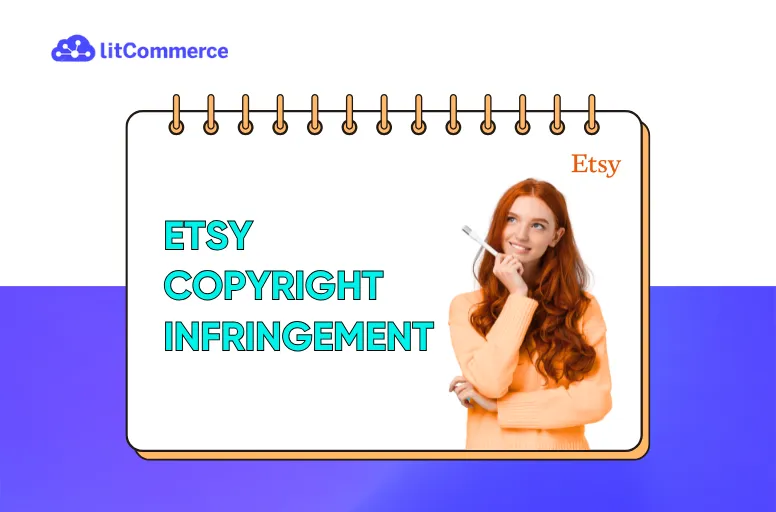Launching a unique creation on Etsy is thrilling, but seeing it copied can be a nightmare. With a solid grasp of Etsy copyright infringement rules, you can protect your designs and grow your shop confidently. This guide offers practical steps to secure your work, navigate disputes, and ensure your creativity remains yours in 2024.
Understanding Intellectual Property on Etsy
For Etsy sellers, understanding these IP laws is crucial to protecting your designs and brands while respecting the rights of others. Etsy copyright infringement can lead to listings being taken down and, in severe cases, legal consequences. With this in mind, let’s explore the main types of intellectual property protections and how they apply to Etsy.
1 – Copyright
Copyright protects original works of authorship, like artwork, designs, written materials, music, and photos. For Etsy, copyright often applies to both digital and physical products created by sellers.
So, how does this apply to Etsy?
Copyright protection is automatically applied to digital goods, such as art prints, digital templates, and designs. As the creator, you retain the rights to your work, allowing buyers to use the item but generally preventing them from reselling or redistributing it without permission.
For physical goods, if your product features unique designs or patterns, copyright protection extends to that original content, though not necessarily to the physical object itself.
Infringement risks: Using copyrighted elements from other sources (such as images from movies, characters, or song lyrics) without permission can result in copyright infringement claims.
2 – Trademark
Trademarks protect brand elements like logos, shop names, slogans, or distinctive colors associated with a brand. On Etsy, trademarks are essential for brand recognition and help prevent consumer confusion.
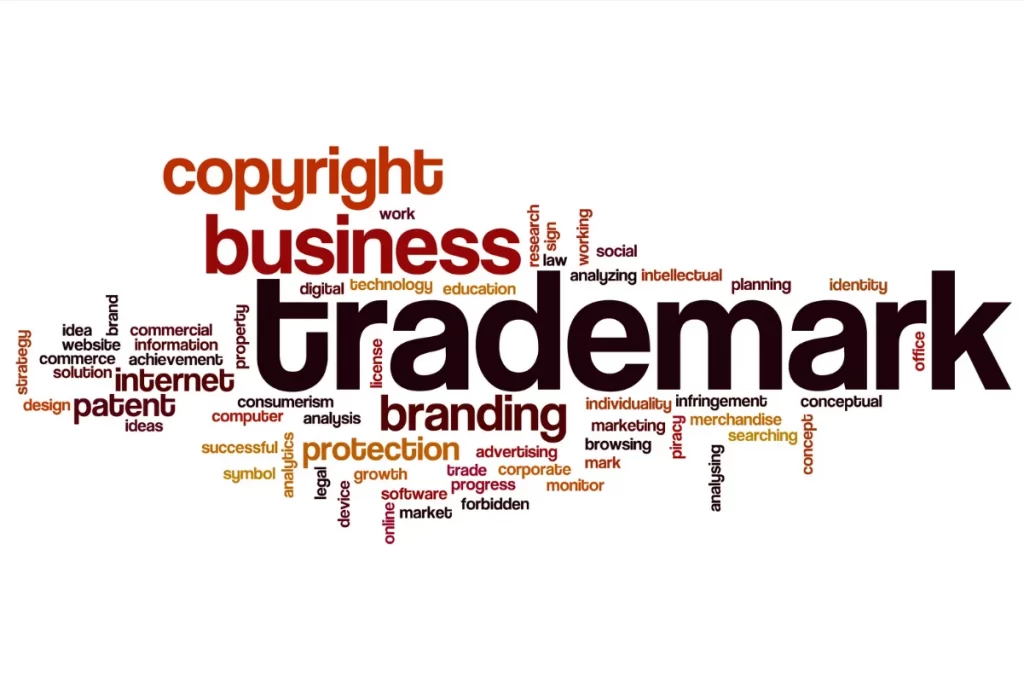
Here’s how trademark protection applies on Etsy:
Brand identifiers such as your shop name, product names, and logos in your listings may be protected under trademark when registered. Using famous logos or names without proper permission—such as “Disney” or “Nike”—constitutes a trademark violation.
Trademarks differ from copyright as they protect branding elements, not creative works. For instance, you can design a logo and copyright it as original art, but you can also trademark it because it will identify your business.
Infringement risks: Trademark infringement may occur if your product or branding misleads consumers into thinking it’s associated with another brand. Direct replicas of brand logos or names without authorization are examples of Etsy trademark violations, and the platform may remove infringing listings to avoid confusion.
3 – Patent
Patents protect an invention or a novel process; on Etsy, this would apply to something unique in the product line. Using the example of how patents apply to Etsy, they would cover items that are unique and functional in the field of products.
For instance, if you sell innovative tools, gadgets, or highly unique design, these may qualify for patent protection, giving you exclusive rights to manufacture and sell that invention. Moreover, the protection scope ensures that no person, without the owner’s consent, may make, use, or sell your patented invention. Hence, it protects your creations.
Although patents are less common in Etsy’s handmade or vintage markets, they can be advantageous for unique inventions with functional benefits. Patents can help differentiate your products, but the process is typically more costly and time-intensive than obtaining copyrights or trademarks.
What is Copyright Infringement on Etsy?
Etsy copyright infringement occurs when a seller uses another person’s copyrighted work without obtaining the necessary permissions. This can result in listing removals or even legal actions, as Etsy enforces strict rules to protect both creators and consumers. Ensuring that the marketplace is filled with original or properly licensed products is a priority for Etsy.
Below are some common types of copyright infringement on Etsy:
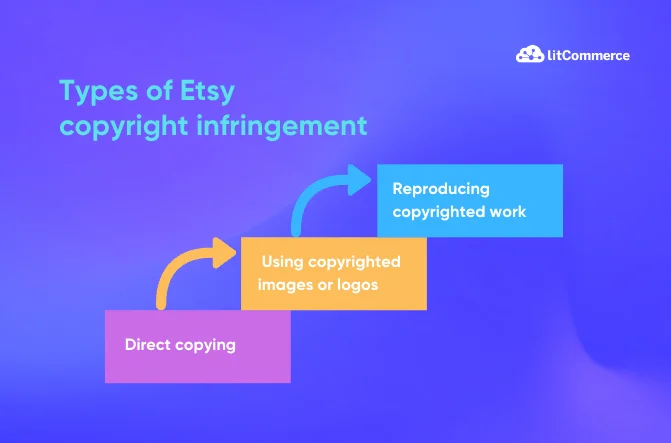
1. Direct copying
Copying someone else’s work is a big copyright issue on Etsy. This happens when you take another seller’s designs, art, or product descriptions without permission and sell them as your own.
For example, if you copy another shop’s digital art print and try to sell it yourself, that’s a clear copyright violation. Even making small changes doesn’t solve the problem if the design still resembles the original. This type of copying disrespects the original creator’s hard work, and Etsy takes it very seriously.
2. Using copyrighted images or logos
Using copyrighted images or logos is another common type of Etsy copyright infringement. This happens when sellers include copyrighted characters, images, or logos from well-known movies, shows, brands, or public figures in their products without holding a license or receiving explicit permission from the copyright owner.
The unauthorized use of these elements in items like T-shirts, mugs, or posters—especially featuring popular characters or brand logos (e.g., Disney or Marvel)—is a direct form of copyright infringement on Etsy.
For example, selling products featuring iconic superheroes or beloved movie characters without permission is considered copyright infringement. Brands work hard to protect their intellectual property, and only officially licensed retailers can use these images. Unauthorized use on Etsy is an infringement that can lead to listing removals and legal consequences.
3. Reproducing copyrighted work
Reproducing copyrighted work on Etsy is an infringement that includes selling replicas, modified versions, or derivative works of someone else’s content without obtaining authorization. This type of Etsy copyright infringement can encompass a range of activities, from creating jewelry inspired by a famous movie prop to replicating a well-known painting.
Even if the design has been slightly altered, recognizable elements retained from the original work still constitute copyright infringement.
For example, a seller creating jewelry resembling a famous prop from a popular movie franchise or crafting a close replica of a famous painting without permission is generating a derivative work. Such acts are unauthorized and can be categorized under copyright infringement on Etsy, as they undermine the creative rights of the original artist or brand.
How Does Etsy Handle Copyright Infringement?
Etsy has established policies and procedures to manage copyright violations effectively, balancing protection for creators and fairness for sellers. Here’s an overview of Etsy’s approach to copyright infringement, including its policies for IP enforcement, takedown processes, and handling repeat offenders.
1. Etsy’s role in protecting intellectual property

Etsy takes a proactive stance on intellectual property by encouraging respect for copyright laws across its platform. To assist copyright holders, Etsy provides specific tools for reporting potential copyright infringements. While Etsy does not monitor every listing individually, it serves as an intermediary when copyright holders notify it of Etsy copyright infringement cases. Key aspects of Etsy’s role include:
- Policy enforcement: Etsy’s policies prohibit the sale of infringing items and outline expectations for sellers to respect IP rights. When a valid copyright claim is submitted, Etsy reviews and may take action against the infringing listing.
- Rights protection: Etsy provides resources for IP holders to submit claims, enabling sellers to gain awareness of IP rights and avoid potential issues.
- Etsy Reporting Portal: This is a dedicated platform that enables intellectual property (IP) rights owners to efficiently report suspected violations on Etsy. By registering your brand through the portal, you can monitor and address potential infringements, ensuring your creations are protected. The portal offers a streamlined process to submit reports, track their status, and receive updates on Etsy’s actions regarding your claims.
2. Takedown process
When a copyright holder detects infringing content on Etsy, they can initiate a takedown process by following these steps:
- Access the Etsy Reporting Portal: Visit the Etsy Reporting Portal to begin the reporting process.
- Register or Sign In: If you have an Etsy account, sign in; otherwise, create a new account to proceed.
- Add Intellectual Property Details: Provide information about the intellectual property you own or represent, including any necessary documentation to verify ownership.
- Submit a Report: Use the portal to search for and identify listings that infringe upon your rights. Compile these listings into a report and submit it through the portal.
Etsy’s dedicated team will review the submitted report. If the report complies with Etsy’s policies, the infringing content will be removed or access to it will be disabled. The affected member will be notified of the action taken
3. Repeat infringements
To maintain an equitable marketplace, Etsy enforces strict actions against sellers who receive multiple copyright infringement notices. This commitment strengthens Etsy’s role as a trusted platform for creators and consumers.
For repeat offenders, Etsy may escalate consequences, including temporary suspension, listing bans, or even permanent account closure if infringement persists. To prevent further notices, Etsy encourages sellers to educate themselves on IP rights, offering resources on intellectual property to help sellers create original, compliant listings. Through these policies, Etsy aims to uphold a respectful, creative space for all sellers while protecting intellectual property rights.
How to Avoid Copyright Infringement on Etsy
Etsy copyright infringement can have significant consequences for sellers, including listing removals, account suspensions, and potential legal actions. To protect yourself and your business, it’s essential to follow guidelines that help you stay compliant with intellectual property laws on Etsy. Here are some effective ways to minimize the risk of Etsy copyright infringement and maintain a compliant shop.
1. Educate yourself on intellectual property laws
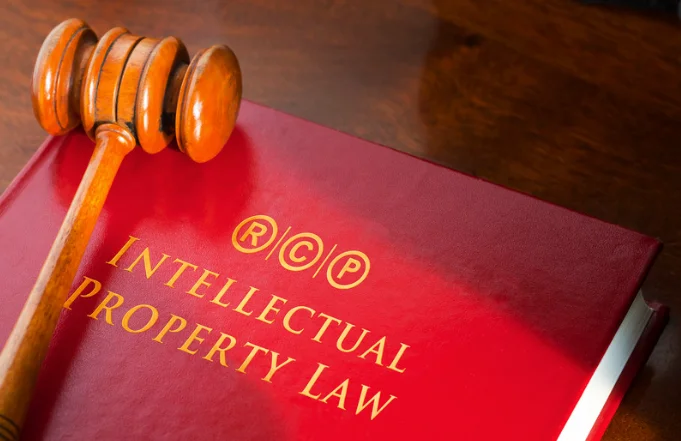
One must understand what constitutes Etsy copyright infringement to avoid potential issues. This knowledge is crucial, as it will protect your shop from legal problems and enable you to make informed choices when developing new products. First of all, take some time to learn about copyright and trademark laws, specifically regarding what you can and cannot use without permission.
Additionally, you should learn about fair use, although it rarely applies to commercially sold products on Etsy. However, there may be limited defenses for commentary, parody, or educational uses in certain cases.
2. Create original content and designs
Originality is key to distinguishing your shop and reducing the risk of copyright infringement on Etsy. By focusing on creating unique, original products, you are more likely to build a brand that truly reflects your creative vision while steering clear of copyright issues. To achieve this, design from scratch and avoid replicating popular styles or elements from existing products.
Instead, rely on original ideas and inspirations to develop distinct products that authentically represent your brand’s identity.
3. Use public domain or licensed content
Public domain content is free to use without restriction, while licensed content explicitly provides permission for its usage. By relying on these sources, you steer clear of the risk of Etsy copyright infringement and confidently create products that are compliant with the law.
To ensure compliance, use images, designs, or other media exclusively from public domain resources or licensed stock image sites that explicitly permit commercial use.It is also important to be very detailed when checking license agreements to fully understand your rights regarding the use and sale of content in your shop, keeping it secure and legal.
4. Avoid copyrighted characters and logos
Most popular characters are covered by copyright and trademark protection, as are logos and celebrity images. Using them without permission is a clear example of copyright infringement on Etsy and could seriously damage your shop.
To avoid these risks, do not use famous characters, logos, or brand names in your designs unless you have obtained official permission. Instead, focus on creating your own characters or abstract designs that are not direct references to any brand or media property; this approach will keep your work unique and within legal bounds.
5. Be cautious with AI-generated art
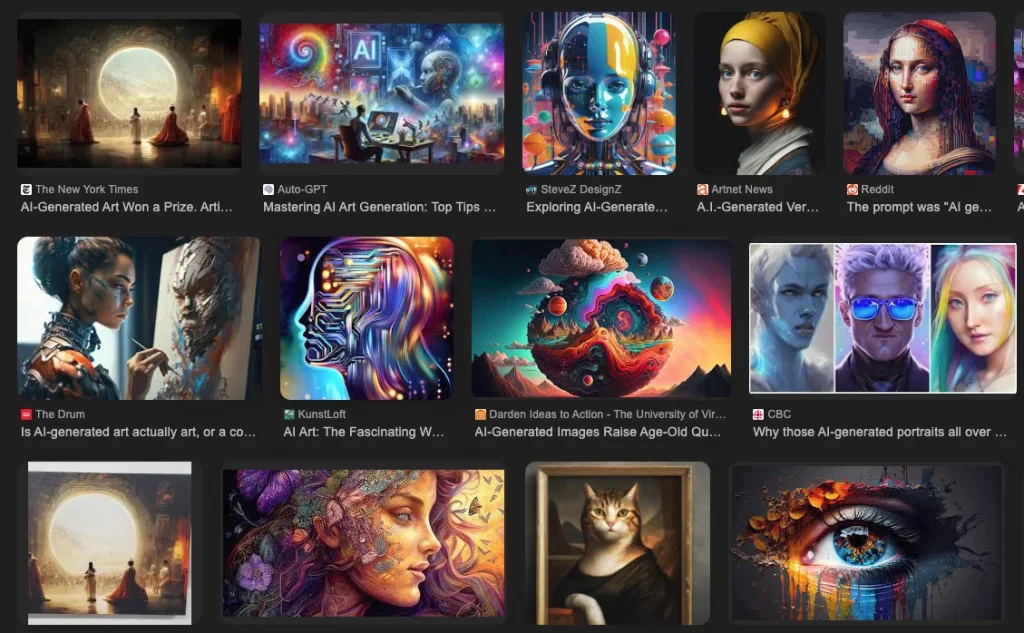
AI-generated art occupies a unique legal gray area, as most AI tools are trained on copyrighted content. This training could result in outputs that unknowingly include protected material, making it essential to understand the potential Etsy copyright infringement risks.
First, be sure to verify that any AI-generated content you use does not directly originate from copyrighted material. Additionally, you can use AI as a starting point and then edit the output to make it your own, ensuring it better fits Etsy guidelines and avoids any legal violations.
5. Don’t copy other sellers’ listings or descriptions
Copying product descriptions, photos, or listing formats from other Etsy shops not only risks copyright infringement but also undermines your shop’s originality and credibility. To avoid copyright infringement on Etsy claims, it’s essential to focus on developing your own unique style.
Start by writing your own product descriptions, taking your own photos, and creating a distinctive listing style. While it’s fine to use other listings as inspiration, you need to ensure that your content reflects your product’s unique features and qualities to maintain authenticity and stand out in the marketplace.
What Happens if You Receive a Copyright Infringement Notice on Etsy?
Receiving a copyright infringement notice on Etsy can be concerning, but understanding the process and knowing your options can help you respond appropriately. Here’s what to expect if you’re accused of copyright infringement on Etsy and the steps you can take.
1. Etsy’s copyright infringement notification process
When a copyright holder submits a valid claim to Etsy, the platform reviews the notice and typically takes action by removing the offending listing. Etsy will then notify the seller of the claim, providing details of the alleged infringement.
The notice may include:
- Notice of removal: Etsy will send you an email explaining that the listing has been removed due to a copyright claim, specifying the item and the basis for the claim.
- Information on the claim: The notification includes the name of the copyright holder, the claimed work, and instructions on how to respond or appeal.
Being aware of Etsy’s notification process can help you act quickly to address the claim and determine your next step
2. Your options after receiving a notice
After receiving a copyright infringement notice, you have a few possible responses:
- Comply: If you acknowledge the infringement, you can accept the removal and avoid relisting the item. This is the simplest way to comply, especially if the claim is valid.
- Modify and relist: In some cases, you may be able to alter the design or description to remove the infringing elements and relist it as a new, original item.
- File a counter-notice: If you believe the claim is incorrect or unfair, you can file a counter-notice with Etsy. This is a formal statement disputing the claim, which Etsy will forward to the copyright holder. If no legal action follows within a set period, Etsy may reinstate your listing.
Note: Counter-notices are legal documents, so ensure you understand the implications before filing. Incorrect counter-notices can escalate the situation.
3. Consequences of repeated infringements
Etsy takes a strict stance on repeat infringements to protect intellectual property on the platform. Sellers who receive multiple infringement notices face escalating consequences, which can include:
- Temporary listing bans: Repeated claims may lead to Etsy suspending specific listings or all listings for a period, impacting your ability to sell.
- Account suspension: Etsy may place your account under review, limiting your ability to post new listings until the issue is resolved.
- Permanent account closure: If infringement notices continue, Etsy reserves the right to permanently suspend your account to maintain platform integrity and protect IP rights.
How to Respond to a Copyright Infringement Notice on Etsy
Receiving an Etsy copyright infringement notice can be stressful, but responding thoughtfully can help you address the issue efficiently. Here’s a step-by-step guide on how to navigate receiving a copyright notice and take the best actions to protect your shop.
1. Review Etsy’s intellectual property policy
Etsy’s Intellectual Property Policy provides the foundation for handling copyright claims, and familiarizing yourself with these policies is crucial for understanding Etsy’s guidelines and the reasoning behind any infringement notice. It’s important to read the policy carefully to grasp how copyright laws are applied on the platform.
Additionally, understanding potential violations is essential; Etsy’s policy outlines common copyright infringements, helping you identify which part of the policy your claim relates to and clarifying your next steps.
2. Assess the validity of the claim
Not all claims are valid, and some may be based on misunderstandings. Therefore, evaluating the legitimacy of the claim is essential in deciding whether to comply, modify, or contest the notice. To do this, you should analyze the details by examining the flagged content and comparing it to the copyright holder’s original work.
Furthermore, check for fair use or public domain content; if you believe your item qualifies under these, make a note of it. If the claim still appears unwarranted, you may consider filing a counter-notice to contest the issue.
3. File a counter-notice
If you believe the claim is incorrect, you have the legal right to file a counter-notice to dispute it. This process can lead to reinstating your listing if the copyright holder does not take further legal action. To proceed, you need to prepare your counter-notice by gathering evidence that demonstrates the claim is incorrect, such as proof of originality or fair use.
Next, submit the counter-notice to Etsy, which will then forward it to the claimant. The claimant has a set period, typically 10-14 days, to respond and decide if they want to initiate further legal action to contest your listing.
However, it’s crucial to be aware of legal risks when filing a counter-notice, as this is a formal legal action. Therefore, if you’re unsure, consult a legal professional to avoid any escalation of the dispute.
4. Modify or remove the infringing content
If the claim is valid, the simplest way to resolve the issue and remain compliant with Etsy’s guidelines is by adjusting or removing the infringing content. To start, make necessary adjustments by modifying the item or listing to eliminate the elements causing the infringement. This step might involve creating new, original designs to replace potentially infringing components.
However, if modifications aren’t feasible, it may be wise to permanently remove the item to prevent further copyright issues and ensure ongoing compliance with Etsy’s policies.
How to Report Copyright Infringement on Etsy
If you discover your intellectual property is being copied or misused on Etsy, you can take steps to protect your rights. Here’s a guide to reporting copyright infringement on Etsy, from reviewing policies to following up on your report.
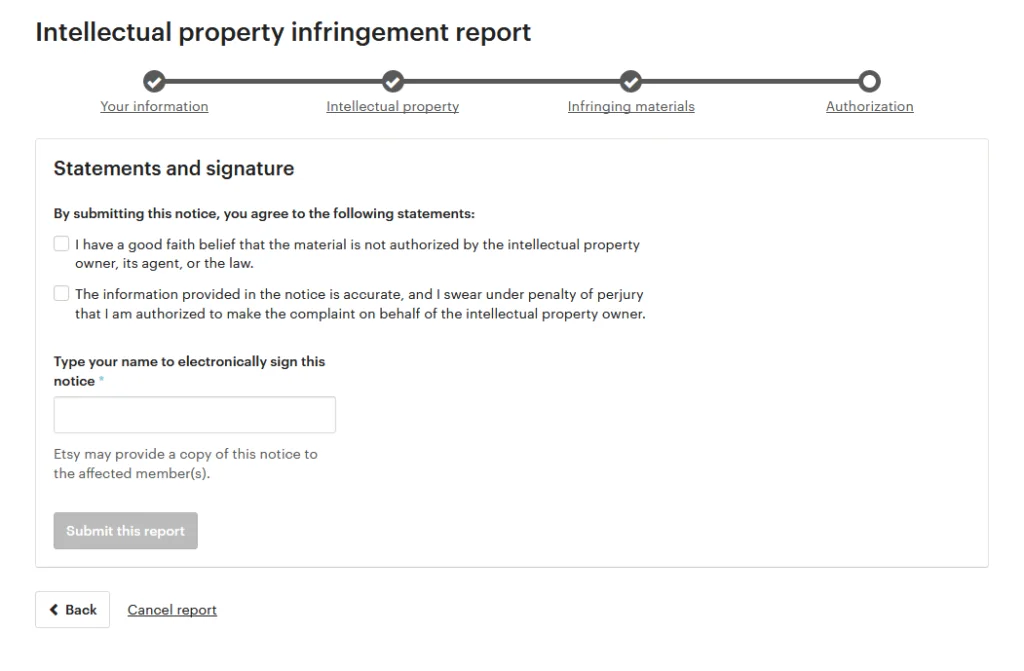
Step 1: Review Etsy’s intellectual property policy
Etsy’s Intellectual Property Policy outlines the platform’s guidelines for copyright infringement. Familiarizing yourself with this policy ensures that your claim aligns with Etsy’s rules and helps you understand what Etsy considers a valid infringement. Then, you should:
- Read through the policy: Access Etsy’s Intellectual Property Policy on its website to see what types of infringement are actionable.
- Identify specific violations: Make sure the content you’re reporting clearly infringes on your copyright based on Etsy’s definitions and guidelines.
Step 2: Gather evidence of infringement
Providing clear evidence helps Etsy verify your claim and strengthens the likelihood of a prompt response. The more concrete your evidence, the easier it is for Etsy to act on your report. Follow the actions:
- Proof of ownership: Collect documentation proving that you own the copyrighted material, such as registration certificates or original files.
- Examples of infringement: Capture screenshots, links, and item descriptions from the infringing Etsy listings that clearly show the copied work.
Step 3: Submit a takedown notice to Etsy
To submit a takedown notice to Etsy for copyright infringement, start by:
1. Accessing the DMCA Takedown Form. Visit Etsy’s Intellectual Property Infringement Reporting Page, where you will find the form necessary for reporting copyright issues. ‘
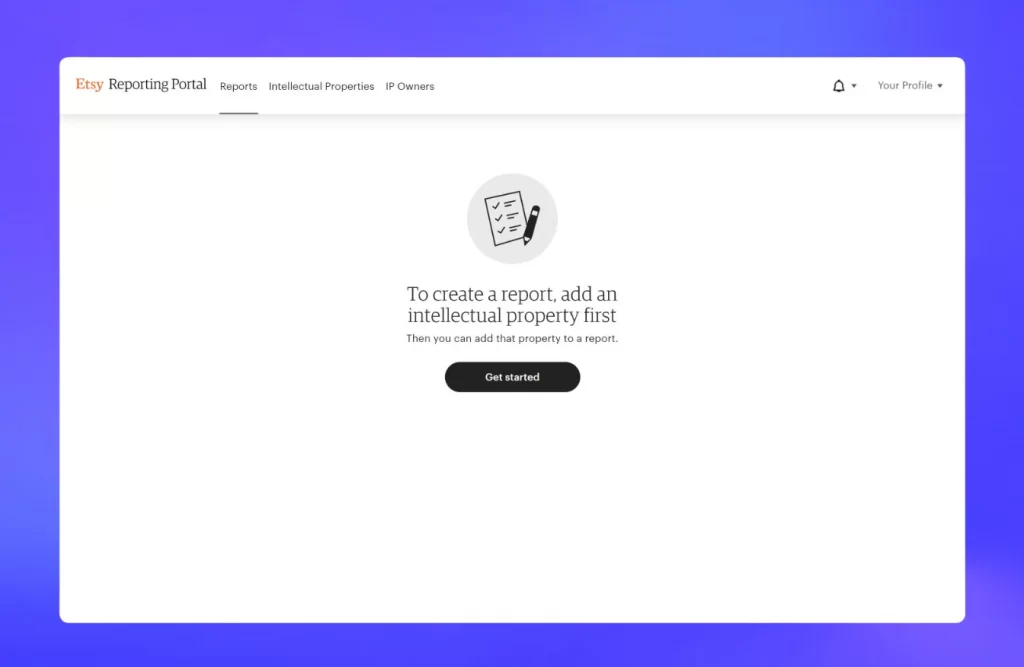
2. Completing the takedown form by entering all required information. This includes your name, contact information, and detailed descriptions of your copyrighted work to establish ownership. Additionally, you must provide the URLs or specific listing IDs of the content you claim is infringing on your copyright.
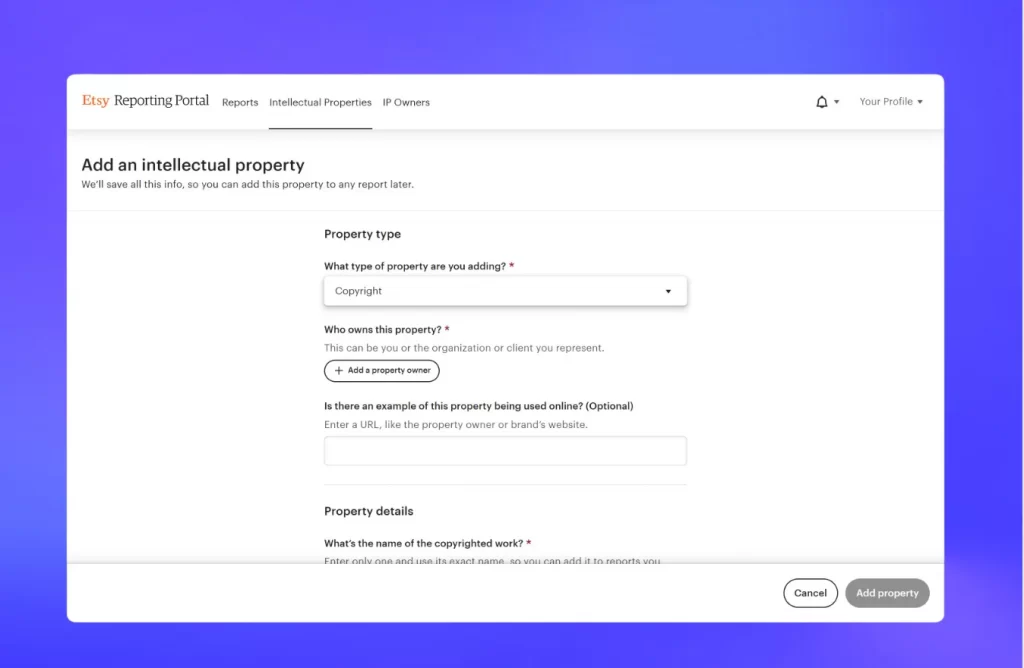
3. Proceeding to submit your notice electronically. Review all the details you entered to ensure accuracy, and then follow Etsy’s instructions to submit the form through the portal. This step is essential for Etsy to review your submission. Once submitted, Etsy will evaluate your claim to determine its validity and notify the seller if the content needs to be removed or disabled based on the findings.
4. Monitoring the progress of your report after submission. Etsy will communicate the status of your claim, typically through email, and inform you of any actions taken.
Step 4: Follow up on the report
After submitting a report, following up ensures that Etsy addresses your claim. Monitoring the status of your report can also alert you if further action is needed on your end. You need to:
- Check your email: Etsy will typically notify you via email regarding the status of your report and any actions taken.
- Contact Etsy support if needed: If you don’t receive updates within a reasonable timeframe, consider contacting Etsy’s support team to inquire about the status of your takedown request.
How to Legally Use Print-on-Demand Services on Etsy
Print-on-demand (POD) services provide Etsy sellers with an efficient way to create custom products without dealing with inventory management. However, it’s essential to adhere to copyright guidelines to avoid Etsy copyright infringement issues. Here’s how to use POD services legally on Etsy, protecting your shop from copyright claims and ensuring compliance.

1. Use licensed artwork and content
To avoid copyright infringement on Etsy, the most reliable approach is to use designs that you’ve either created yourself, purchased with full commercial rights, or obtained with permission from the original creator. Proper licensing is essential not only to protect your brand’s reputation but also to minimize legal risks.
Using original designs or buying artwork with clear commercial rights is key. When purchasing designs from a marketplace, be sure to carefully review the license terms to confirm that they allow for commercial use, especially if you plan to use the artwork for print-on-demand products. This step is crucial in ensuring that you have the legal rights to sell items featuring these designs.
2. Verify POD platform’s licensing agreements
While several POD (print-on-demand) platforms provide licensed artworks or design templates for sellers to use, licensing agreements can vary significantly between platforms. You need to ensure that your chosen POD service includes a license for any third-party content to avoid infringing on copyrights on Etsy.
At first, you should make sure to review the terms and policies of the platform you are using. For example, POD providers like Printify, Printful, and Redbubble each have their own licensing terms and conditions, so it’s crucial to understand their agreements. This step is essential in avoiding copyright infringement by ensuring you only use designs that are licensed for commercial use.
Additionally, it is important to avoid using unlicensed content. If a platform’s policy indicates that content is for personal use only or has unclear licensing, it’s best to avoid using these designs on products you plan to sell in your Etsy shop. Selling unlicensed content can increase the risk of copyright claims and lead to legal issues for your business.
Read more about the Etsy POD guide for any beginners who want to start quickly: Etsy Print on Demand: A 2025 Guide to Start Your Business.
3. Monitor your listings for infringement
Regularly reviewing your listings for compliance is a proactive strategy that helps you manage potential copyright issues on Etsy. This practice not only protects your shop’s reputation but also ensures that your shop remains in good standing with Etsy’s policies.
To maintain full compliance, you should periodically review all your listings to confirm that none include unlicensed artwork or designs that could potentially violate Etsy’s copyright policies. Additionally, you need to stay updated on Etsy’s copyright guidelines, as these policies may change over time. By keeping yourself informed about policy updates, you can ensure that your listings remain fully compliant, which reduces the risk of copyright infringement and supports the long-term success of your Etsy shop.
FAQs About Etsy Copyright Infringement
Common questions and answers regarding copyright issues on Etsy.
To avoid copyright infringement on Etsy, keep these practices in mind: Etsy has a strict policy against repeated copyright violations, though it doesn’t specify an exact limit for infringement notices. However: +Initial infringement: Etsy typically removes infringing listings when a notice is received. +Multiple infringements: Sellers with repeated violations may face account warnings, temporary suspensions, or restrictions. +Permanent account closure: Continued infringements can lead to a permanent account ban, as Etsy prioritizes a copyright-compliant marketplace. If Etsy sends you a copyright infringement notice, here’s what to expect: Responding quickly and addressing the issue can help maintain your account’s standing on Etsy. If someone is infringing on your copyright on Etsy, you can report it by following these steps:
Conclusion: Protecting Your Etsy Shop from Copyright Infringement
Your Etsy shop reflects your creativity and effort, and protecting it from copyright infringement is essential. By understanding Etsy’s IP protections and proactive steps, you can confidently safeguard your brand. With these tools, you can keep creating, knowing your work remains distinctly yours.
If you’re looking for a reliable solution to boost your Etsy store while managing multiple channels, give LitCommerce a try. We offer a 7-day FREE trial for sellers to explore our features, and our team is always ready to assist you with any questions or guidance you need.
Last but not least, follow our Retailer Blog today for more insightful eCommerce news and tips!

